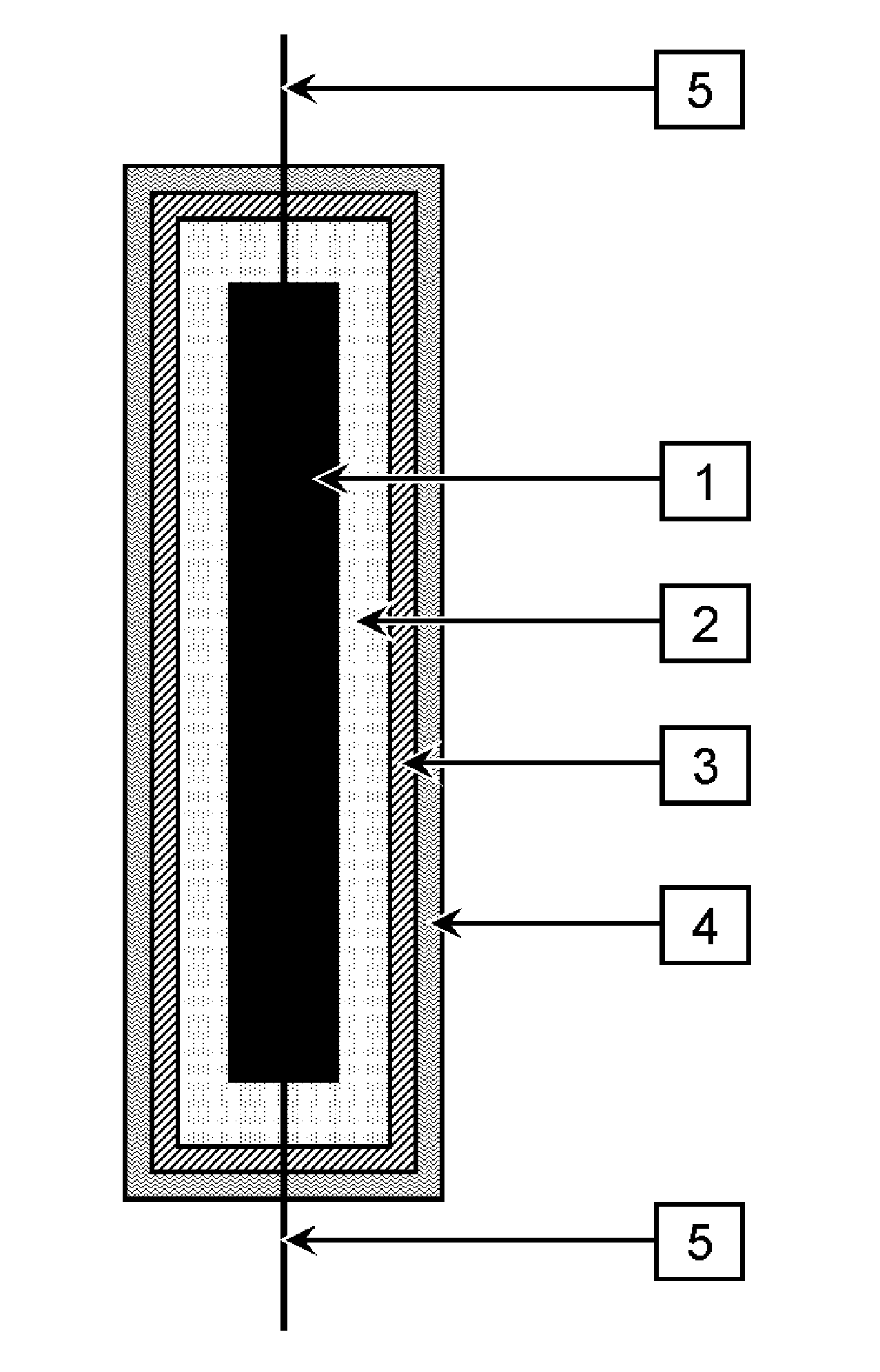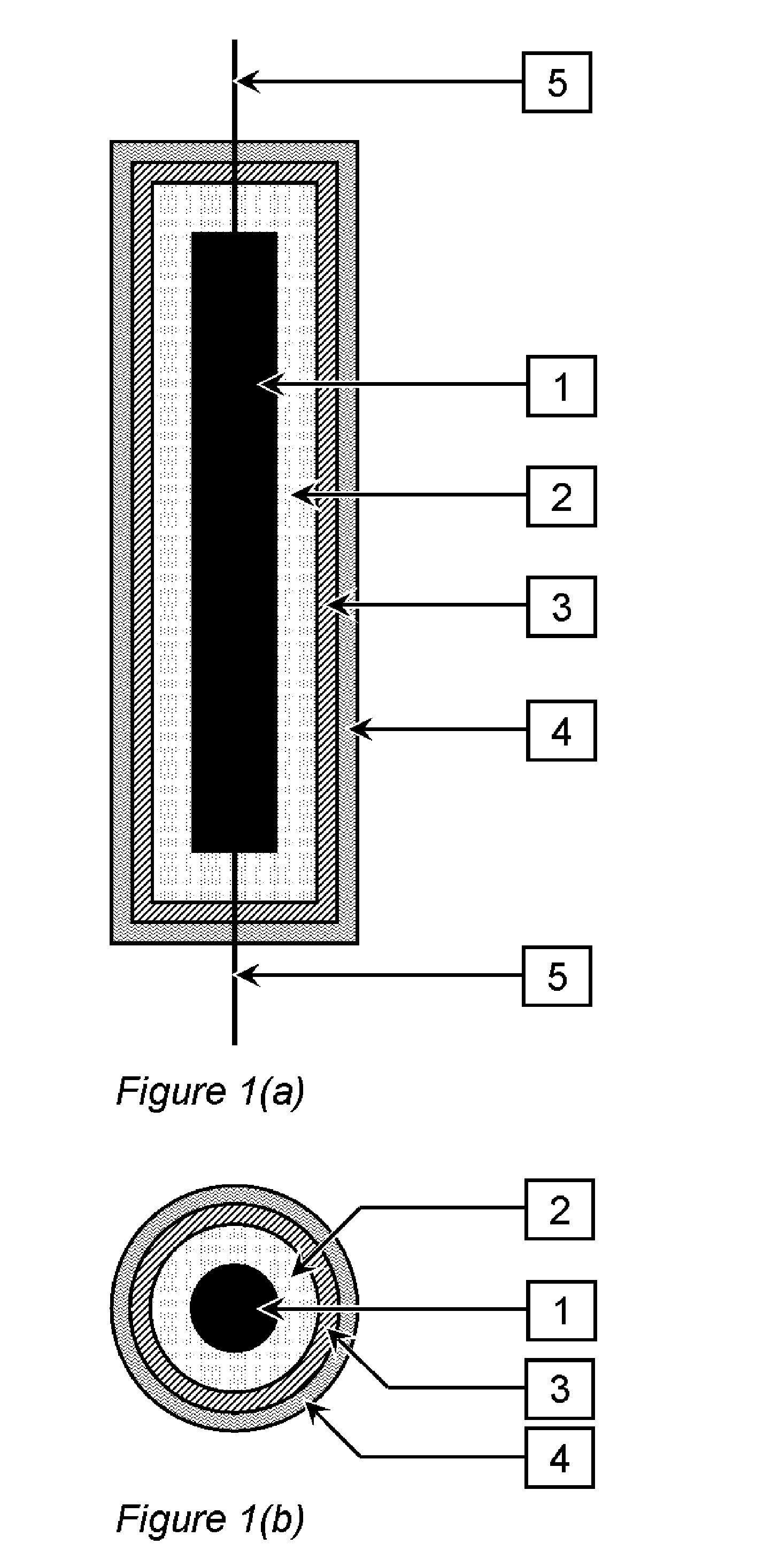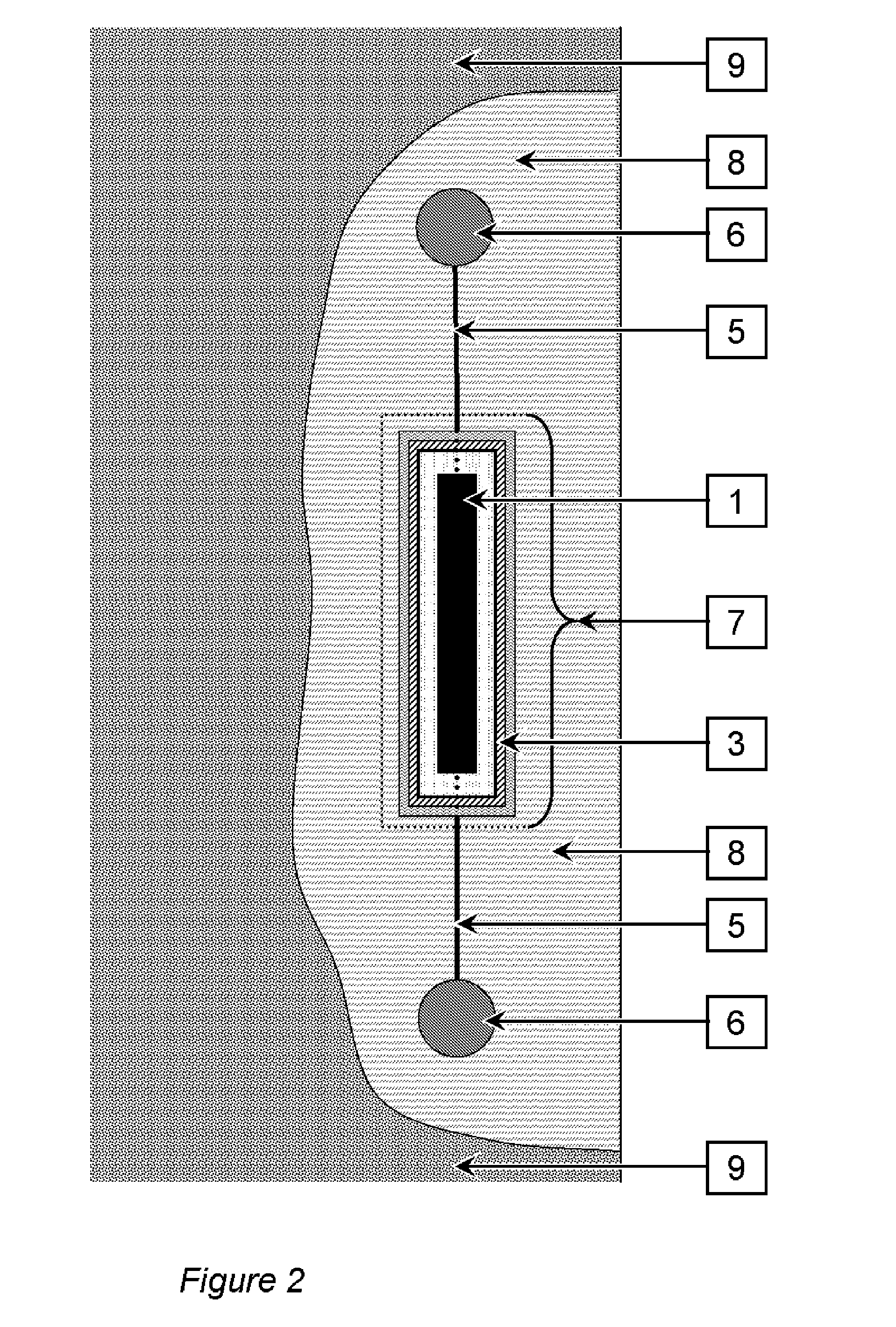Protection of reinforcement
a technology of steel reinforcement and reinforcement, applied in the direction of paper/cardboard containers, lamination, containers, etc., can solve the problems of affecting the health and safety of workers, affecting the protection effect of steel reinforcement, and affecting the protection effect of the activating agent, so as to achieve the effect of low health and safety risk
- Summary
- Abstract
- Description
- Claims
- Application Information
AI Technical Summary
Benefits of technology
Problems solved by technology
Method used
Image
Examples
example 1
[0050]A sacrificial anode assembly consisting of a base metal, electron conductor and gypsum containing free sulphate ions was produced and tested. The base metal consisted of a block of aluminium alloy measuring 29.7 mm by 11.9 mm by 8.6 mm. The alloy was US Navy specification MIL-A-24779(SH). An electron conductor consisting of a 1.0 mm2 sheathed copper core cable was connected to the aluminium alloy. This connection was made by drilling a 4 mm diameter hole to a depth of 8 mm into the 11.9 by 8.6 mm face of the block, stripping away 8 mm of sheath off the end of the copper core cable, inserting the exposed copper core into the drilled hole and securing it with a 3.5 mm diameter aluminium pop rivet in the drilled hole. The connection was insulated with a fast curing silicone sealant obtained from a builder's merchant. Once the sealant had cured, the aluminium block was suspended centrally in a cylindrical plastic mould made from a 50 mm length of 50 mm diameter plastic pipe with a...
example 2
[0060]An aluminium anode assembly with layers was produced and tested. The aluminium alloy was the same as that used in Example 1 and the dimensions of the block used were 11.8 mm by 5.2 mm by 27.0 mm. A sealed electrical connection was made on the 11.8 mm by 5.2 mm face of the block which was then located in a cylindrical plastic mould made from a 50 mm length of 50 mm diameter pipe that was filled with a fluid mixture of plaster, potassium sulphate and tap water as described in Example 1. The plaster was then allowed to cure to form a rigid gypsum material with free sulphate ions.
[0061]A Laponite clay (grade JS Laponite supplied by Rockwood Additives Ltd. in the UK ) was mixed with deionised water in the proportion 1 Laponite to 5 water by weight using a high shear mixer. The solution was mixed for 20 minutes and allowed to stand for a further 40 minutes before use. A 1 mm thick layer of the resulting mixture was brush applied to the surface of the gypsum and allowed to dry for se...
example 3
[0067]An aluminium anode assembly with layers was produced as described in Example 2. The dimensions of the aluminium block used were 12.5 mm by 7.7 mm by 20.1 mm and a sealed electrical connection was made on the 12.5 mm by 7.7 mm face of the block. The remaining assembly production detail is identical to that described in Example 2.
[0068]The experimental arrangement including the reinforced concrete specimen used to test the aluminium anode assembly is shown in FIG. 3 and described in Example 2. The concrete block into which the anode assembly was cast for testing purposes was removed from the mould after 24 hours. It was then cured standing in water for 68 days at an average temperature of 11° C. The anode was connected to the steel and the steel potential was held at −350 mV relative to the saturated copper sulphate reference electrode from the start of this period to the end of the test. After this period, the block was removed from the water and allowed to dry for a further 11...
PUM
| Property | Measurement | Unit |
|---|---|---|
| resistivity | aaaaa | aaaaa |
| current density | aaaaa | aaaaa |
| length | aaaaa | aaaaa |
Abstract
Description
Claims
Application Information
 Login to View More
Login to View More - R&D
- Intellectual Property
- Life Sciences
- Materials
- Tech Scout
- Unparalleled Data Quality
- Higher Quality Content
- 60% Fewer Hallucinations
Browse by: Latest US Patents, China's latest patents, Technical Efficacy Thesaurus, Application Domain, Technology Topic, Popular Technical Reports.
© 2025 PatSnap. All rights reserved.Legal|Privacy policy|Modern Slavery Act Transparency Statement|Sitemap|About US| Contact US: help@patsnap.com



